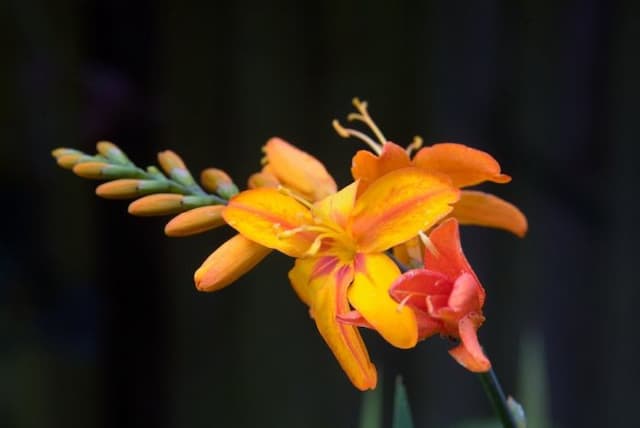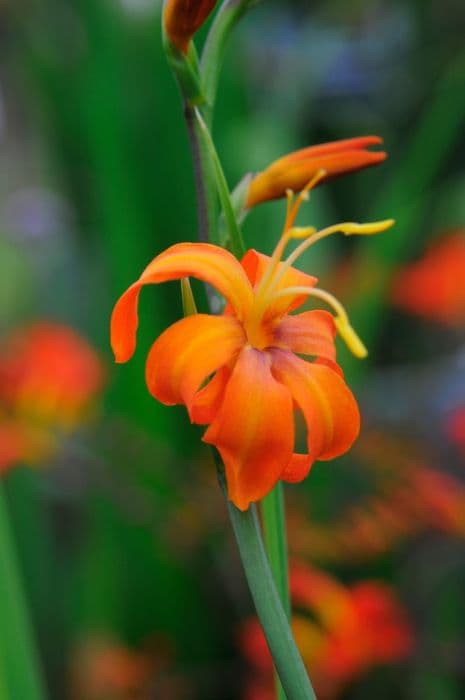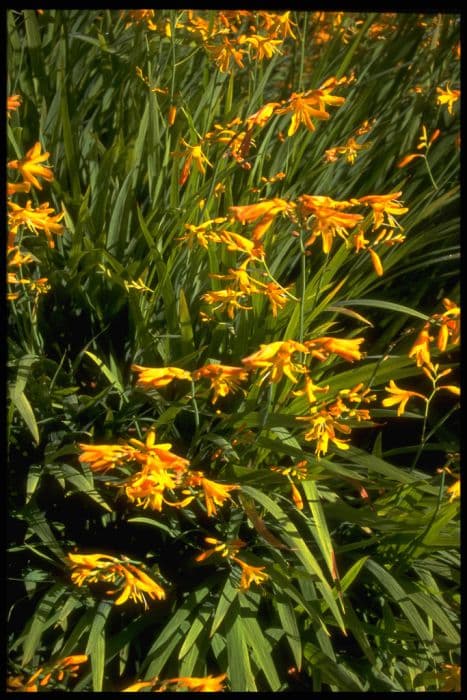Variegated Japanese Iris Iris japonica 'Variegata' (v)

ABOUT
Iris japonica 'Variegata' is an ornamental plant that is easily recognized by its striking features. This variety of iris displays a unique foliage pattern with long, sword-like leaves that boast a variegated color scheme. The leaves have a creamy-yellow to white striping along their length, contrasting beautifully with the deep green that typifies the rest of the leaf. The plant produces delicate, airy flowers that are a sight to behold. These blossoms come in shades of light to medium blue, often accented with white and yellow markings. Each flower has a graceful form, with three upright petals known as "standards" and three downward curving petals called "falls.” The falls may be adorned with intricate veining or spotting, adding to the overall elegance of the bloom. Iris japonica 'Variegata' blooms primarily in the spring, putting on a show of color when many other plants are just beginning to wake from their winter dormancy. The subtle variegation of the foliage remains a point of visual interest throughout the growing season, long after the blooms have faded. Overall, this iris presents a lush and refreshing presence in the garden with its attractive foliage and eye-catching blooms, providing visual interest without the need to reference its specific dimensions.
About this plant
 Names
NamesFamily
Iridaceae
Synonyms
Variegated Japanese Iris, Variegated Fringed Iris, Variegated Butterfly Flower
Common names
Iris chinensis 'Variegata', Iris maackii 'Variegata', Iris japonica 'Aureo-Variegata'.
 Toxicity
ToxicityTo humans
The Variegated Japanese Iris is not considered highly toxic to humans. However, if ingested, it can potentially cause mild stomach upset, as many members of the Iris genus contain compounds that can be irritating to the digestive tract. Symptoms of ingestion may include nausea, vomiting, abdominal pain, and diarrhea. There have not been significant reports of severe poisoning from this plant in humans. It is generally advised to avoid eating any part of ornamental plants unless they are known to be edible.
To pets
The Variegated Japanese Iris is considered mildly toxic to pets, including cats and dogs. If ingested, it can cause gastrointestinal irritation, evidenced by vomiting, drooling, and diarrhea. In some cases, there could also be abdominal pain. Typically, the symptoms are mild to moderate and can be managed by a veterinarian. It is recommended to prevent pets from having access to this plant to avoid any potential health issues.
 Characteristics
CharacteristicsLife cycle
Perennials
Foliage type
Evergreen
Color of leaves
Variegated
Flower color
Light purple
Height
1 feet 2 inches (35 cm)
Spread
1 feet 2 inches (35 cm)
Plant type
Herb
Hardiness zones
8
Native area
Japan
Benefits
 General Benefits
General Benefits- Aesthetic Appeal: The Iris japonica 'Variegata' is known for its striking foliage and beautiful, delicate flowers that enhance the visual appeal of gardens and landscapes.
- Easy to Grow: This variety is relatively easy to cultivate, making it suitable for gardeners of all skill levels.
- Drought Tolerance: Once established, Japanese iris has a degree of drought tolerance, reducing the need for frequent watering.
- Ground Cover: Its growth habit makes it an excellent ground cover that can help suppress weeds and protect soil from erosion.
- Wildlife Attraction: The flowers of the Japanese iris attract pollinators such as bees and butterflies, contributing to biodiversity.
- Seasonal Interest: With a flowering period in spring, it adds seasonal interest to gardens during a time when many other plants are not yet in bloom.
- Adaptability: The Japanese iris can grow in a variety of soil types, although it prefers moist, well-drained conditions.
- Cold Hardiness: This plant is cold-hardy in many regions, making it a resilient choice for cooler climates.
- Low Maintenance: Japanese iris requires minimal maintenance once established, with reduced need for fertilizers and pest control.
 Medical Properties
Medical PropertiesThis plant is not used for medical purposes.
 Air-purifying Qualities
Air-purifying QualitiesThis plant is not specifically known for air purifying qualities.
 Other Uses
Other Uses- Crafting - The long leaves of the Iris japonica can be used in crafting projects, such as for basket weaving or as natural ribbons for gift wrapping, due to their strength and attractive variegation.
- Floral Arrangements - The unique variegated foliage provides a visually interesting element in floral arrangements and can be used to add contrast and pattern.
- Garden Borders - Iris japonica can be planted as an ornamental garden border that provides a foliage contrast with other plants due to its light-colored variegation.
- Erosion Control - When planted in masses, the root system of this iris can help to stabilize soil in areas prone to erosion.
- Photography - Its striking variegated leaves and delicate blooms make it a popular subject for botanical photographers and artists.
- Dye Production - Historically, the roots could potentially be used to produce natural dyes, although this is not a common practice for Iris japonica.
- Scholarly Studies - It can be used as a subject for botanical studies and research due to its unique leaf patterns and hardiness.
- Garden Ponds - The Iris japonica can be planted around garden ponds as part of a water feature, providing a graceful backdrop or edge framing.
- Education - The plant can serve an educational purpose by offering a living example in botany classes for studying variegation in plant leaves.
- Culinary Garnish - Although not commonly consumed, the flowers can be used as a garnish for fancy dishes in haute cuisine, provided that they have not been treated with any chemicals.
Interesting Facts
 Feng Shui
Feng ShuiThe plant Iris is not used in Feng Shui practice.
 Zodiac Sign Compitability
Zodiac Sign CompitabilityThe plant Iris is not used in astrology practice.
 Plant Symbolism
Plant Symbolism- Hope and Trust: Iris often symbolizes hope, faith, and trust, with the flower acting as a reassuring presence that good things are to come.
- Royalty and Elegance: With its striking appearance and royal blue color, irises are frequently associated with royalty and elegance, embodying a dignified beauty.
- Wisdom and Valor: In some cultures, the iris is seen as a representation of wisdom and courage, often used to convey respect for someone's experience or bravery.
- Purity and Innocence: The iris can symbolize purity and innocence, similar to other white or light-colored flowers, and is sometimes used in religious ceremonies for this reason.
- Messages and Communication: Dating back to Greek mythology, the iris was linked to Hermes, the messenger god, and thus can represent communication and the delivery of messages.
 Water
WaterThe Japanese Roof Iris should be watered deeply once a week, allowing water to seep down to the roots, rather than just wetting the surface. During hot or dry periods, you may need to increase watering to twice per week, ensuring that each session provides enough moisture to penetrate the top 6 to 8 inches of soil. In general, providing about 1 to 1.5 gallons of water per plant per watering session will suffice, depending on the size and development stage of the plant. It's crucial to avoid overwatering to prevent root rot, and always check that the top inch of soil is dry before the next watering.
 Light
LightThe Japanese Roof Iris thrives in bright, indirect light or partial shade. It should be planted in a location that receives morning sun and afternoon shade, or dappled sunlight throughout the day. Avoid placing it in full, direct afternoon sun which can scorch the leaves and stress the plant.
 Temperature
TemperatureThe Japanese Roof Iris prefers temperate conditions and can thrive in temperatures ranging between 50 and 85 degrees Fahrenheit. It can survive minimum temperatures down to around 20 degrees Fahrenheit, but growth will be best maintained within the ideal range. The plant should be protected from frost to prevent damage to its foliage and roots.
 Pruning
PruningPruning the Japanese Roof Iris is important to remove dead or damaged foliage and to promote healthy growth. Trim back the leaves and spent flower stalks after blooming is finished, typically in late spring or early summer. Pruning also encourages a tidier appearance and can rejuvenate the plant for the next growth cycle.
 Cleaning
CleaningAs needed
 Soil
SoilThe Variegated Japanese Iris prefers a well-draining soil mix with rich organic matter. A mix of garden loam, peat moss, and sharp sand or perlite is ideal. The pH of the soil should be slightly acidic to neutral, around 5.5 to 7.0.
 Repotting
RepottingVariegated Japanese Iris should be repotted every 2 to 3 years or when it becomes root-bound. The best time to repot is in the spring or after flowering.
 Humidity & Misting
Humidity & MistingVariegated Japanese Iris thrives in moderate to high humidity levels, ideally between 45% to 65%. Ensure good air circulation to prevent fungal problems.
 Suitable locations
Suitable locationsIndoor
Place in bright, indirect light and keep soil moist.
Outdoor
Plant in partial shade, moist but well-drained soil.
Hardiness zone
7-9 USDA
 Life cycle
Life cycleIris japonica 'Variegata', also known as the variegated fringed iris, begins its life as a seed that, once sown and germinated, develops into a small seedling. The seedling establishes itself by growing long, variegated leaves and a rhizome, the underground stem from which new growth emerges. As it matures, it forms clumps due to the rhizomes spreading horizontally. The plant reaches maturity when it starts flowering, usually in spring, displaying delicate, fringed flowers that are typically pale blue with markings. After pollination, the flowers will wither, and the plant will produce capsules containing seeds, allowing the cycle to begin anew. Throughout the life cycle, the plant requires periodic division every few years to maintain vigor and prevent overcrowding.
 Propogation
PropogationPropogation time
Spring to Summer
Propogation: The most popular method of propagation for Iris japonica 'Variegata', commonly known as Variegated Japanese Iris, is by division. This is typically done in late summer after the blooming season has ended, or in early fall. To propagate by division, carefully dig up the rhizomes of the plant, ensuring you keep a good amount of roots attached. Each section of rhizome should have at least one fan of leaves. Trim the leaves to about one-third of their original height to reduce water loss and replant the divisions at the same depth they were growing before, spaced about 12 to 18 inches (roughly 30 to 45 centimeters) apart to allow room for growth. Water the new plantings well to help establish them. This method allows gardeners to quickly and efficiently increase their stock of Variegated Japanese Iris while also promoting the health of the original plant by preventing overcrowding.
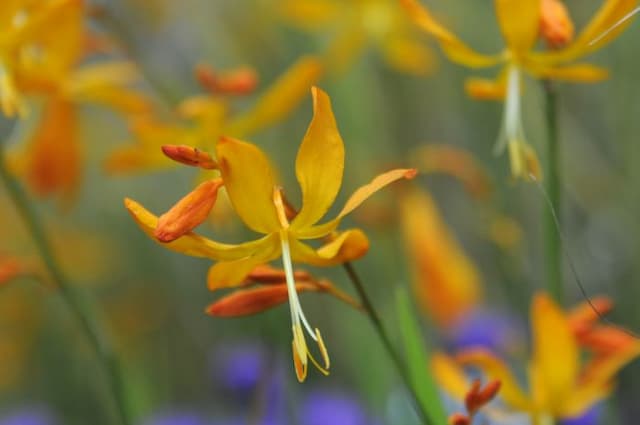
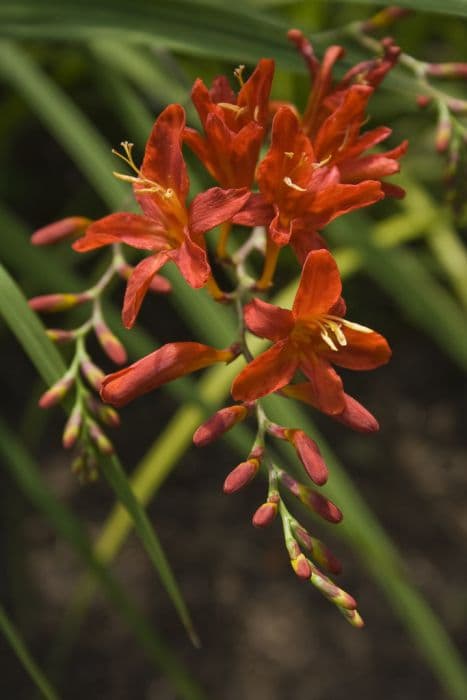
![Montbretia [Bright Eyes]](/_next/image?url=https%3A%2F%2Fplants-admin.emdemapps.com%2Fimages%2Fplants%2F%2Fimages%2F604b5f4a483b6.png&w=640&q=75)
